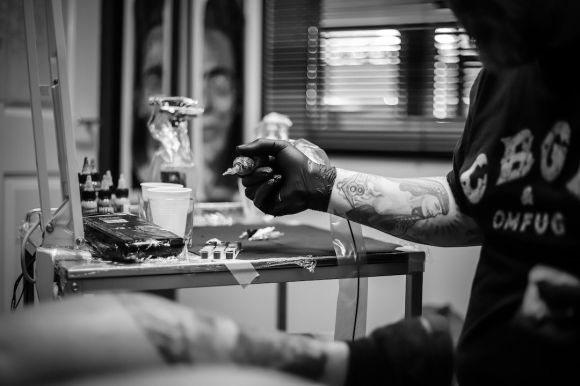Tattoos have been a form of self-expression for centuries, with their origins dating back to ancient civilizations. Today, they continue to hold a significant place in modern society, as people of all ages and backgrounds embrace the art of tattooing. What makes tattoos truly unique is the creativity behind the designs. From intricate patterns to meaningful symbols, every tattoo tells a story. In this article, we will delve into the world of tattoo designs and explore the artistic process behind their creation.
The Artistic Inspiration
The process of designing a tattoo begins with inspiration. Tattoo artists draw inspiration from a wide range of sources, including nature, mythology, and personal experiences. By combining different elements, they create designs that are not only visually appealing but also hold deep meaning for the wearer. Whether it is a beautiful floral pattern or a bold tribal design, every tattoo is a reflection of the artist’s creativity and the client’s personal story.
The Sketching Stage
Once the artist has gathered their inspiration, they move on to the sketching stage. This is where their creativity truly shines. Using pencil and paper or digital software, they bring their ideas to life, experimenting with different shapes, lines, and shading techniques. Sketching allows the artist to explore various possibilities and refine the design until it matches the client’s vision perfectly. It is during this stage that the artist’s artistic skills and attention to detail come into play.
The Importance of Customization
One of the most fascinating aspects of tattoo designs is their ability to be customized. Tattoo artists understand that every individual is unique, and their tattoos should reflect that. Therefore, they work closely with their clients to create designs that are tailored to their preferences and personalities. This customization process involves incorporating specific elements, such as names, dates, or symbols, that hold personal significance. By doing so, the artist ensures that the tattoo becomes a personal and meaningful work of art.
The Role of Color
Color plays a crucial role in tattoo designs, as it adds depth and vibrancy to the artwork. Tattoo artists carefully choose colors that complement the overall design and evoke the desired emotions. Whether it is a vibrant rainbow or a subtle grayscale, the use of color can enhance the visual impact of a tattoo and make it truly unique. By skillfully blending different shades and hues, tattoo artists can create stunning works of art that stand the test of time.
The Art of Placement
Another aspect of tattoo design that requires careful consideration is placement. The artist must take into account the body’s contours and the client’s preferences to ensure that the design fits harmoniously. Whether it is a small tattoo on the wrist or a full sleeve covering the arm, the placement of a tattoo can greatly affect its overall aesthetic. Tattoo artists use their artistic eye to determine the best placement for each design, ensuring that it becomes an integral part of the client’s body.
In conclusion, the creativity behind tattoo designs is truly remarkable. From the initial inspiration to the final placement, every step of the process requires artistic skill and attention to detail. Tattoo artists have the unique ability to transform an idea into a visually stunning and deeply meaningful work of art. So, the next time you admire someone’s tattoo, take a moment to appreciate the creativity that went into its design.
